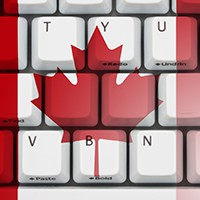Last updated: April 07 2015
Federal Budget Set for April 21

The cat is out of the bag! The federal budget date has been set and the big question is whether the contribution limit for Tax Free Savings Accounts will double to $11,000.
Is that a good thing? We’re asking your opinion in the April poll. Will there be other pre-election goodies? If so, how will we pay for them against an uncertain economic picture?
One way, is to cash in on some profits: According to a CBC article, the Federal Government sold some 73.4 million shares Monday “in an unregistered block trade to Goldman, Sachs & Co.” The sale, worth about $3.3 billion, is to aid the government in fulfilling their election promise to balance its’ books for 2015-2016.
But there are other tax expenditures the government could tighten up, to pay for some of the goodies, including some of these more costly provisions:
• The deduction of carrying charges incurred to earn investment income. Last year, the government scrapped the safety deposit box as an eligible deduction under this provision. Are there other restrictions in the future for investors who borrow or seek advice to invest?
• Tax exemptions on principal residence gains. A hot real estate market has helped to shore up personal balance sheets. This may be a good place to look for more money, although it certainly would be unpopular in a pre-election year.
• The income inclusion rate for capital gains. Currently at 50%, previous governments have raised those rates to 662/3 and 75% in the past, when more money was needed to shore up financial requirements.
• Perks of employment. Changes to the non-taxation of business-paid health and dental benefits is a surprising costly number for the feds and so, it’s a perk that could come under the microscope.
• The Age Credit. This is currently available to those 65 and old and is income tested. Increasing clawback zones or pushing the credit back to age 67 to align with the OAS changes that are coming, might cents for government in the longer term.
• Repeal of indexing of personal amounts. This trick, called “bracket creep” was used in the 1990’s to collect billions from taxpayers, largely unaware of the take.
Oliver said the budget will focus on jobs, growth and long-term prosperity. The budget is expected to post a deficit of $2.9 billion for the current fiscal year; there is a predicted 2015-16 surplus of $1.9 billion. Oliver said Canada’s debt is half of the average G7 countries.
In terms of the TFSA question – should the limits be doubled or not? -consider the following two findings from the Boosting Retirement Readiness and the Economy Through Financial Advice, Conference Board of Canada, October 2014:
• Financial advice can boost saving rates; which leads to better retirement readiness and lifts economic output.
• An increase in domestic savings is found to lower real GDP growth in the short term but leads to economic gains over the longer term.
In addition, Knowledge Bureau found the following in considering the best ways for families to leverage their new Family Tax Cut refunds and enhanced Universal Child Care Benefits:
• $5500 of the family tax savings could be invested each year in a TFSA for the spouse over the 25 year child rearing period.
• That builds a tax free retirement fund of $275,624 at an average investment return of 5%.
• But, if the limits were doubled, the savings opportunities would double too, for those families who chose to take advantage of the full TFSA room.
Stay turned to Knowledge Bureau for an extensive budget report, available free with a purchase of Jacks on Tax book and to Knowledge Bureau students enrolled in certificate, diploma or designation programs.

